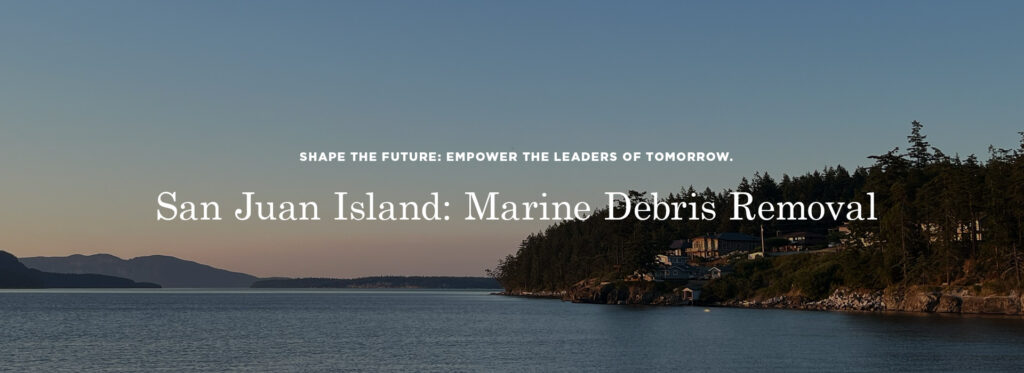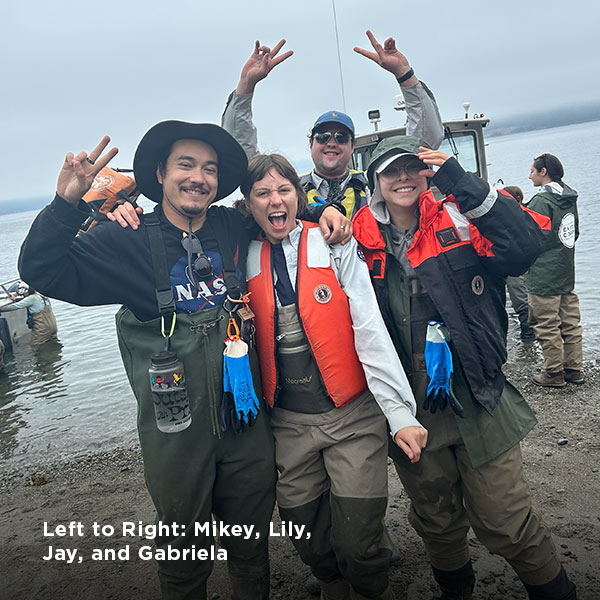Marine Debris Removal

Written by Lily Wirth
In July my crew spent two weeks camping in Anacortes to assist the Washington Department of Natural Resources, the Samish Indian Nation, and a Washington Conservation Corps crew in their work removing toxic creosote from beaches on the San Juan Islands. The WDNR was created in 1957 to manage state trust lands, and today their mission is to “Manage, sustain, and protect the health and productivity of Washington’s lands and waters to meet the needs of present and future generations”. For this project they have paired up with the Samish Indian Nation, the successor to the Salish Tribe whose traditional territory ranges from the tops of the Cascade Mountains to the western shores of the San Juans, covering a large portion of the Salish Sea.

The Samish Indian Nation partners with state and federal agencies on multiple grants to preserve and protect the environmental and cultural and natural resources. We also worked alongside a Washington Conservation Crew whose full time job is to work under the WDNR and Sammish Indian Nation to remove creosote and other marine debris.
Creosote is a wood preservative made up of more than 300 chemicals that prevent decay and insect infestation. It is very effective and used to treat telephone poles, railroad ties, piers, docks, and floats. There are thousands of old and unused creosote pilings in Puget Sound, which break apart and send pieces to wash up onto shores near and far. Unfortunately, the chemicals found in creosote, namely Polycyclic aromatic hydrocarbons (PAHs), are toxic to marine life, and become more toxic and more likely to leach from the wood when exposed to UV light, or sunshine.

Many of the species that are impacted are important parts of the food web for salmon, orcas, and various birds. Some examples of how these chemicals impact organisms include; increasing the mortality rate of herring eggs, increasing disease and altering growth and reproductive function in English sole, and reducing the growth and altering the immune function of juvenile salmonids. Creosote poses risks to humans as well, through the vapors emitted on a hot day, touching or burning the treated wood, and the chemicals being present in our seafood. To work with creosote, we had to wear long sleeves and gloves to avoid direct exposure.
We started each day on the beach at Washington Park in Anacortes, meeting with the folks from WCC, WDNR, and Samish Indian Nation. We would load up onto the boats with our tools and head to various beaches of the San Juan Islands. Andrew Packer from WDNR uses MyCoast to determine where we would be working each day, which is an app in which members of the community can record the location and size of creosote logs and other marine debris that they find on the beach.

Once the boats reached the shore of our destination, we would walk the beach in search of creosote. We found everything from pieces the size of a grapefruit to 30+ foot logs.
Anything small enough to fit on the boats and be accepted by the transfer station, about 4 feet long or shorter, could be put directly on the boats. Larger logs had to be cut into smaller pieces. Creosote is considered a hazardous waste, so special precautions were used to ensure we kept ourselves safe and didn’t spread any more chemical into the environment. The person using the chainsaw (which was always someone on the WCC crew) would put on their haz-mat suit while the rest of us would put down a large sheet of plastic to catch the shavings, then carefully roll the log onto it using tools called peaveys. Once the log was cut into pieces, we would make sure to wipe any shavings off the wood and onto the plastic before transporting them onto the boats.

Then we would roll out the plastic and pour the shavings into a garbage bag. To move the heavy pieces, we usually used a log carrier (AKA suede hook) which requires two people to use. For more manageable pieces one could use a picaroon to drag the wood onto the boats. When the boats became full, we would take them to the creosote box, carefully stacking the logs on top of one another in the box to later be picked up and taken to a transfer station.
Our first week there, our site partner estimated that as a unit we removed a total of roughly 15,000 tons of creosote treated wood from the environment! We were very successful in removing the toxic logs as well as in using new tools and working with new people. The work we did is just a small part of the massive effort to clean up creosote from our beaches, but every piece removed counts and helps to create a healthier ecosystem, which benefits all of those who call the Pacific Northwest home. The beaches and waters close to shore hold a majority of the resources the Samish tribe has relied on historically and still use today, a common saying of the Elders being: “When the tide goes out our tables are set for dinner”. The Samish people’s culture is inseparable from the beach and the sea, and by removing pollutants and creating healthier ecosystems, we are supporting the survival of native cultures and livelihoods.


Lily (she/they) was born and raised in Seattle WA. She earned a Bachelor of Science from The Evergreen State College where she studied natural sciences including invertebrate zoology and evolutionary biology. After serving a term with the Washington Conservation Corps in 2019-2020, they interned at PAWS Wildlife Hospital caring for sick and injured wildlife. She then spent some time working in childcare and environmental education before returning to environmental restoration with EarthCorps, where she is excited to gain the experience needed to continue a career in the environmental field. She is passionate about conservation and happiest when she gets to spend her time outdoors making a positive impact on the environment.
Outside of work, they enjoy hiking, camping, watching movies, listening to music, and spending time with their friends and cats!

